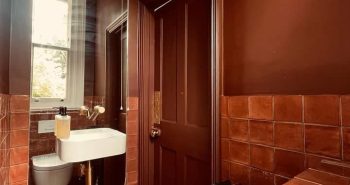What are the benefits of glass splashbacks?
Surface protection
Glass splashbacks can minimise paintwork or tile damage by catching all those spills, stains, and harmful cooking oils. Cooking residue can accumulate in the seams and cause stains, requiring the replacement or renewal of the grouting over time.
Steam produced while cooking on your stove can destroy most surfaces, but it won’t harm a splashback. Simply wipe away any moisture to keep the splashback clean.
Revive your kitchen design
A glass splashback is a fantastic way to give your kitchen decor a pop of colour or a unique touch. Due to the structure of glass splashbacks, they can be made in a variety of colours, finishes, styles and cuts so you can customise your splashback to whatever you want; whether you want it to match the rest of your kitchen or stand out by using a contrasting colour.
Heat and water-resistant
Due to their non-porous surface, glass splashbacks are water-resistant and don’t allow water to permeate into the material. Since they repel water, if any liquid is splashed onto the splashback, it will simply glide off. It makes cleaning a breeze!
Because glass splashbacks are made from toughened glass, they can also withstand high temperatures and is 5 times more. Find out more about toughened glass here.
How do you remove glass splashbacks?
If you want to replace your glass splashbacks with a new one, you can easily remove your current glass splashback by following the steps below.
Step 1
Get a wire cheese cutter and slice through the silicone sealant that attaches the splashback to the wall. Start at a corner edge first, apply strong, consistent pressure, and gently drag the wire diagonally downward. Do this for the opposite corner as well.
Step 2
Use your chisel to gradually lever the splashback off of the wall where the two cuts intersect. Get someone to help you take the weight of the splashback.
If the glass splashback doesn’t come off with the wire cheese cutter then you can use a rubber hammer. You can break the glass from the outer edges and work your way towards the centre. When you see that the last piece is stuck to the wall, you can use a chisel to wring it off.













